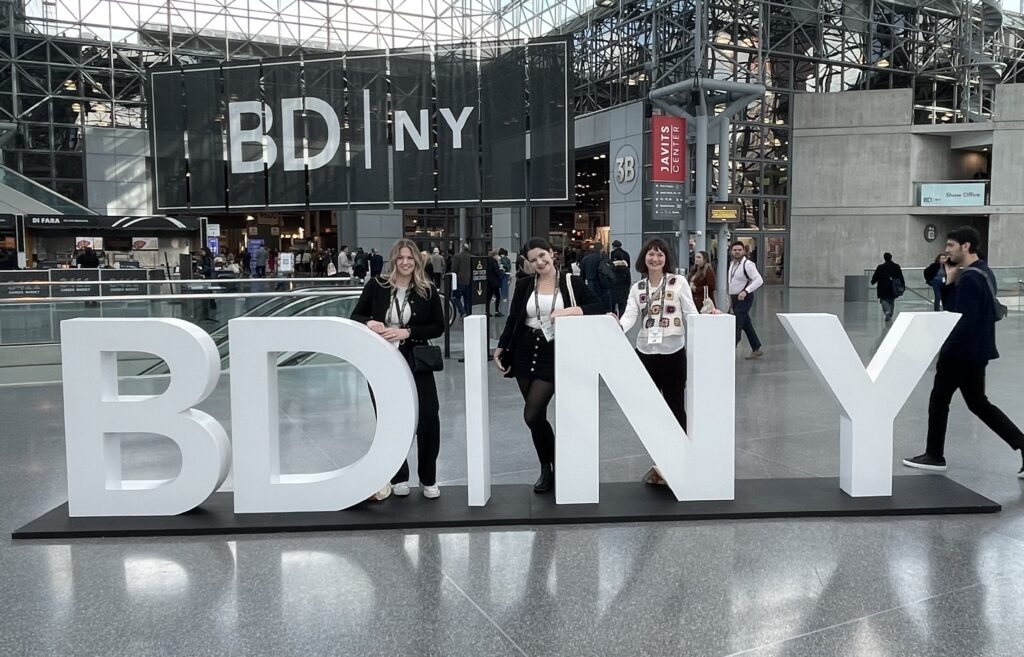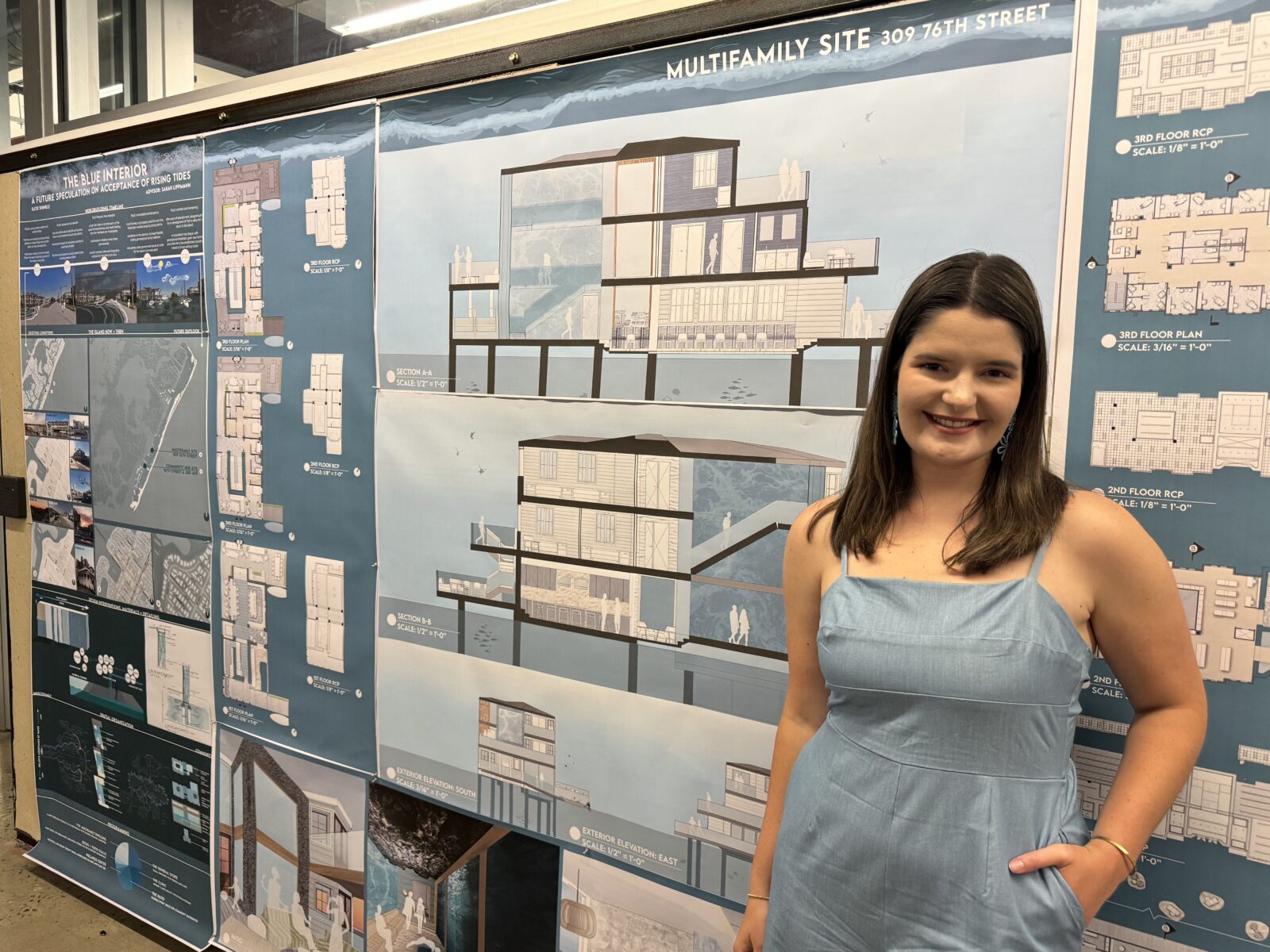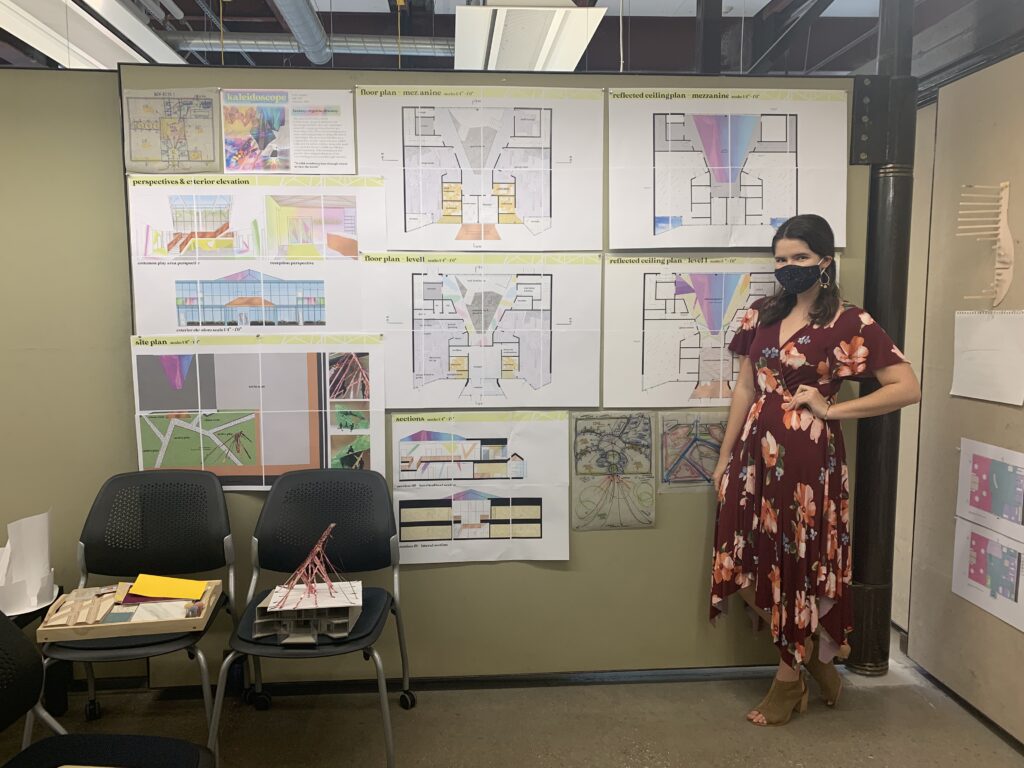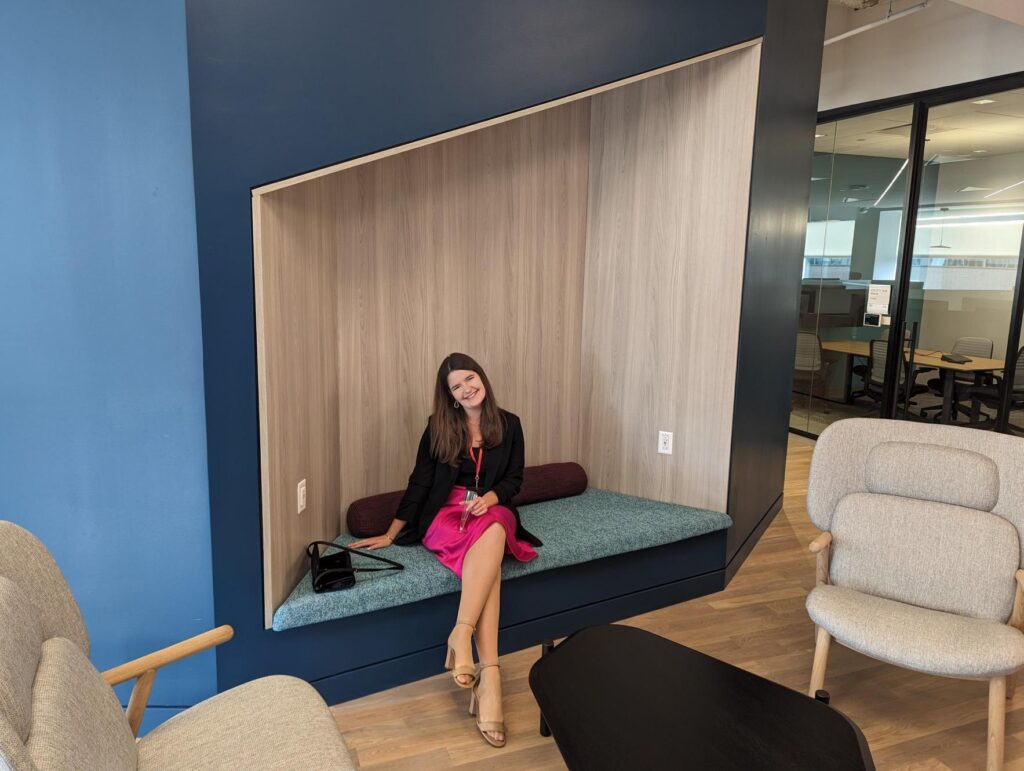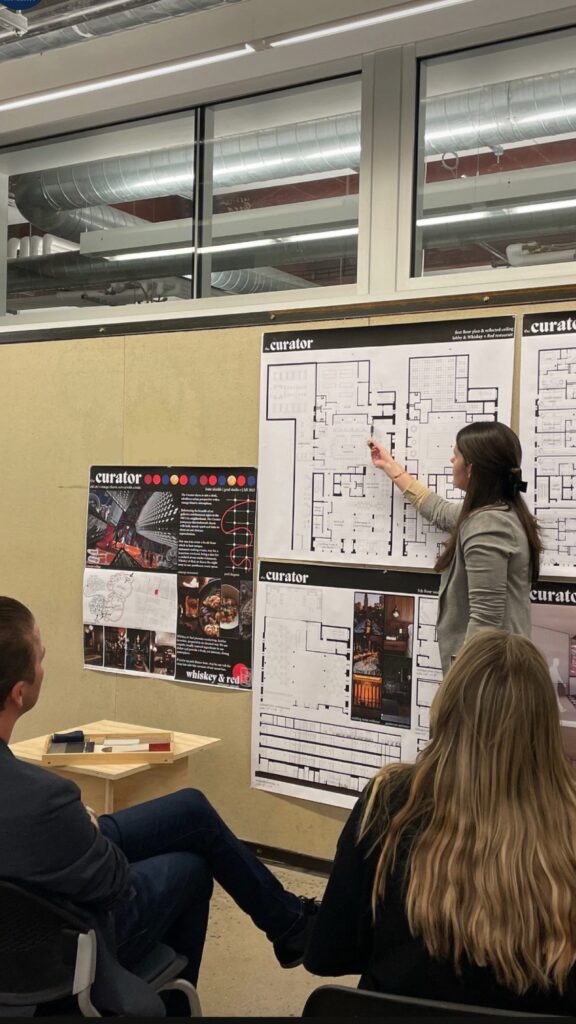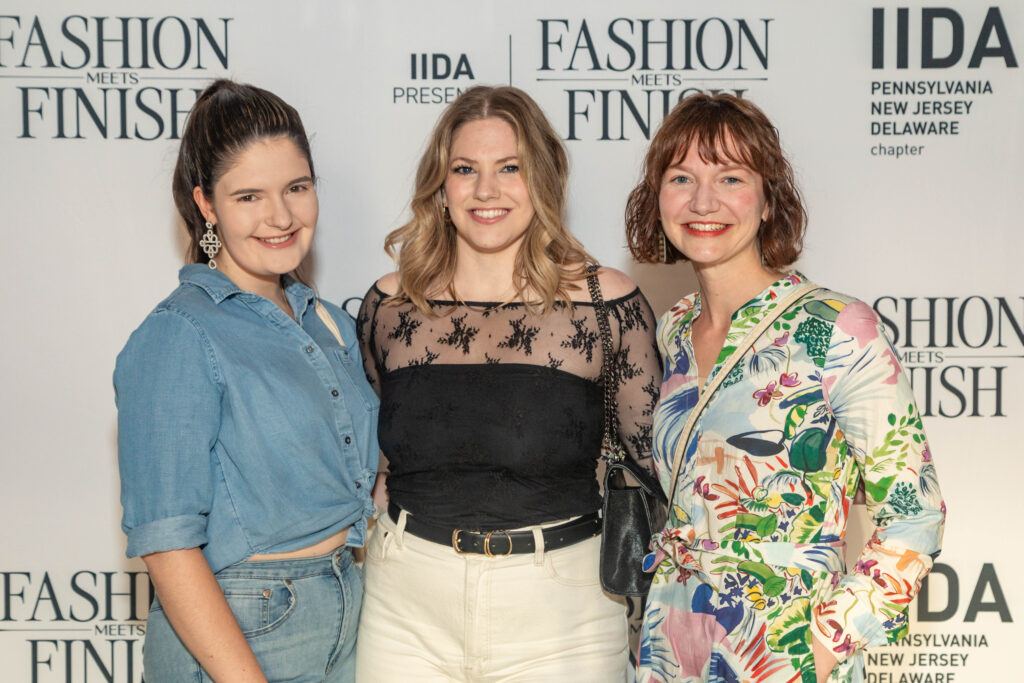Hi, reader! My name is Katie, and I’m an interior designer here at Strada. I graduated from Drexel University about a year ago, and have been a designer here for three years, starting as a co-op intern.
I’ve done a lot of reflection on my journey to this point, especially on the interplay between what I was taught in college in the studio and what I have absorbed in the workplace. So, I wanted to take an opportunity to share a bit about my journey, how I’ve grown, and what I’ve learned.
A little about me… I’ve known I wanted to be an interior designer since I was about six years old. One of my first memories was “Take Your Child to Work Day” with my dad. I came home at the end of the day and replicated his corporate office environment from memory with whatever I could find around the house, just for fun. A part of me was always fascinated with the built environment – not just observing it but also creating within it.
In my first few studio classes in the Interior Design department at Drexel, what started to crystallize about my design identity was my sense of imagination. My favorite projects were ones with strong central ideas, like a park shelter with city views inspired by rose-colored glasses or a rowhome for a marine biologist with a stair surrounding a three-story aquarium.
Concepts and materiality came naturally to me, but presentations and critique culture certainly did not at the start. I’m sure you can imagine the scene: shaky voice, tremors, the whole nine yards. As my studio projects got more complex, thinking through design details became a challenge, too. I just felt like I didn’t know enough yet, like the go-to manufacturers for certain products, how to design ceilings or millwork details well, and the more “real-world” aspects of projects. Sure, it’s great to throw photos of furniture from online into a rendering or drop light fixtures or diffusers around an RCP, but I wanted to know the why and how design happens the way it does, and what makes spaces really work.
My Strada journey began as a six-month co-op, which is an opportunity to gain work experience built-in to the Drexel undergraduate curriculum. As a third-year 20-year-old student suddenly going on interviews at design firms, being asked to defend the rationale behind my studio projects was honestly quite intimidating. But once I got through that process and harnessed the passion I had for this career path, I found myself in the perfect place to learn the nitty-gritty details about “real” design that I’d been craving!
I was soon brought onto project teams in corporate, life science, K-12, and higher education. Some of the most formative projects during my co-op included a full-floor renovation for Avid Radiopharmaceuticals in University City, and a refurbishment of a 100-year-old school building for KIPP Charter Schools in Camden, NJ. I was participating in client meetings, working in real BIM models, and learning the ins and outs of being an interior designer.
It was all scary in the moment, but my Strada colleagues had faith that I would learn quickly, and allowed me to be an equal, active member of the design team. They reinforced that my ideas were valuable and spared a lot of their time to answer my questions.
With time and exposure to more projects, opportunities to lead finishes presentations, and more visits to sites, I felt more and more comfortable in the firm environment. By the time I started my college classes back up six months later, I felt like a completely different designer. I no longer felt clueless about so much of the design process. I knew what realistic plans should look like because I had drawn them. I knew who the reps to call were, because I had met them.
My studio projects gained a new sense of depth and realism, and the best surprise was that I was now a good presenter! I’ll never forget during a critique in my later years at Drexel when a professor complimented my verbal presentation skills, saying that she could tell I had given client presentations before. I immediately knew how valuable my work experiences had been. Not wanting to stop learning, I decided to stay on part-time through the completion of my 4+1 dual degree program, and felt myself only get more comfortable, more confident, and more self-assured in my career.
I felt generally prepared to join the Strada team as a co-op student, but there are a few aspects of my day-to-day work at Strada that I think would benefit students if they were a larger part of university interior design curriculum.
- Contract Administration
- In school, projects end with a final design presentation, and then you move on to the next project. In practice, this couldn’t be further from the truth! Successful management of site visits, addenda and bulletins, RFIs and submittals, and change orders is so integral to every project. Outside of some rare mentions, this was not part of my degree program. I learned about CA entirely through my work experience.
- Coordination with Colleagues, Consultants, and Contractors
- Before working, I had only ever designed independently, where one person conceives of a concept at the start, and designs every last detail themselves. That’s not how real-world projects really happen. In addition to internal teamwork with architects and other designers, coordination with contractors, engineers, lighting designers, and other disciplines is a major contributor to project success.
- Designing with Constraints
- Another common aspect of school projects is a lack of constraints, where decision-making can sometimes be frivolous or solely aesthetic-driven. One of the most important parts of realistic design that I’ve picked up is the ability to adhere to budgets while managing client opinions and expectations.
In the end, school, work, and my lived experiences have each informed who I am as a designer, but the amount I learned on-the-job really can’t be overstated. The Strada Philly team has been such a kind and supportive group to learn from and grow with. In only three years, I’ve come a long way, but I also know there is a lot more learning and growing to be done, and I’m excited to tackle it head-on.
